Panasonic AV-HS410 Handleiding
Panasonic
Niet gecategoriseerd
AV-HS410
Bekijk gratis de handleiding van Panasonic AV-HS410 (145 pagina’s), behorend tot de categorie Niet gecategoriseerd. Deze gids werd als nuttig beoordeeld door 33 mensen en kreeg gemiddeld 4.9 sterren uit 17 reviews. Heb je een vraag over Panasonic AV-HS410 of wil je andere gebruikers van dit product iets vragen? Stel een vraag
Pagina 1/145

Operating Instructions
<Operations and Settings>
Live Switcher
Model No. AV-HS410N
ENGLISH
VQT3U71A(E)M1111TY0 -FJ
How the Operating Instructions are configured
<Basics>:
The <Basics> describes the procedure for connection with the required equipment and for installation.
Before installing this unit, be sure to take the time to read through <Basics> to ensure that the unit will
be installed correctly.
<Operations and Settings> (this manual):
This <Operations and Settings> describes how to operate the unit and how to establish its settings.
For details on how to perform the basic menu operations, refer to
“2-2. Basic menu operations”
in the <Basics>.

2
p Information on software for this product
1. Included with this product is software licensed under the GNU General Public License (GPL) and GNU Lesser General
Public License (LGPL), and users are hereby informed that they have the right to obtain, change and redistribute the
source codes of this software.
To obtain the source codes, go to the following home page:
http://pro-av.panasonic.net/
The manufacturer asks users to refrain from directing inquiries concerning the source codes they have obtained and
other details to its representatives.
2. Included with this product is software which is licensed under MIT-License.
Details on the above software can be found on the CD provided with the unit. Refer to the folder called “LDOC”.
(Details are given in the original (English language) text.)
Trademarks and registered trademarks
p Microsoft®, Windows® XP, Windows Vista®, Windows® 7
and Internet Explorer® are either registered trademarks or
trademarks of Microsoft Corporation in the United States
and other countries.
p Intel® and Intel® CoreTM are trademarks or registered
trademarks of Intel Corporation in the United States and
other countries.
p Adobe® and Reader® are either registered trademarks or
trademarks of Adobe Systems Incorporated in the United
States and/or other countries.
p SDHC Logo is a trademark of SD-3C, LLC.
p Primatte® is a registered trademark of IMAGICA DIGIX Inc.
p The copyrights of Primatte® belong to IMAGICA DIGIX Inc.
p The patents for Primatte® belong to IMAGICA DIGIX Inc.
p Other names of companies and products contained
in these Operating Instructions may be trademarks or
registered trademarks of their respective owners.
About copyright and licence
Distributing, copying, disassembling, reverse compiling,
reverse engineering, and also exporting in violation of export
laws of the software provided with this unit are expressly
prohibited.
Abbreviations
The following abbreviations are used in this manual.
p Microsoft® Windows® 7 Professional SP1 32/64-bit is
abbreviated to “Windows 7”.
p Microsoft® Windows Vista® Business SP2 32-bit is
abbreviated to “Windows Vista”.
p Microsoft® Windows® XP Professional SP3 and Microsoft®
Windows® XP Home Edition SP3 are abbreviated to
“Windows XP”.
p Windows® Internet Explorer® 8.0 is abbreviated to “Internet
Explorer”.
p In this manual, model AV-HS410N is given as “AV-HS410”.
p Both SD memory cards and SDHC memory cards are
described as “memory cards” in this manual.
When individual descriptions are provided, they are
featured individually.
p Personal computers are referred to as “computers”.
Illustrations and screen displays featured in the
manual
p What is shown in the manual’s illustrations and screen
displays may differ from how it is actually appears.

3
Before use .................................................... 5
Overview ........................................................................... 5
Concerning the ratings display ...................................... 5
Disclaimer of warranty .................................................... 5
Network security .............................................................. 5
Concerning differences in the system versions ........... 6
1. Basic operations ..................................... 7
1-1. Background transition ............................................. 7
1-1-1. Selecting the bus ................................................ 7
1-1-2. Selecting the bus using the SHIFT function ....... 7
1-1-3. Selecting the bus mode ...................................... 8
1-1-4. Selecting the transition mode ............................. 8
1-1-5. Manual transition ................................................ 9
1-1-6. Auto transition .................................................... 9
1-1-7. Cut transition ......................................................9
1-2. Wipe ........................................................................10
1-2-1. Selecting the wipe pattern ................................ 10
1-2-2. Selecting the wipe direction ............................. 11
1-2-3. Wipe decorations (border, soft effect) .............. 11
1-2-4. Setting the wipe start position .......................... 12
1-2-5. Modifying wipe ................................................. 12
1-2-6. Setting the latency ............................................ 14
1-3. Key ........................................................................... 15
1-3-1. Selecting the key type ...................................... 15
1-3-2. Selecting the key material ................................ 16
1-3-3. Key transitions .................................................. 17
1-3-4. Key preview ...................................................... 19
1-3-5. Adjusting the luminance key and linear key ..... 19
1-3-6. Adjusting the chroma key ................................. 20
1-3-7. Key decorations ................................................ 26
1-3-8. Masking the key signals ................................... 27
1-3-9. Flying key ......................................................... 28
1-3-10. Setting the priority ............................................ 28
1-4. PinP (picture in picture).........................................29
1-4-1. Selecting the PinP channel and material ......... 29
1-4-2. Transition between PinP materials ................... 29
1-4-3. Selecting Shape ............................................... 30
1-4-4. PinP preview .................................................... 30
1-4-5. PinP transitions ................................................ 30
1-4-6. PinP adjustments ............................................. 31
1-4-7. Linking PinP1 and PinP2 .................................. 32
1-4-8. PinP decorations .............................................. 33
1-4-9. Trimming settings ............................................. 34
1-5. DSK (downstream key) .......................................... 35
1-5-1. Selecting the DSK type ....................................35
1-5-2. Selecting the DSK material .............................. 36
1-5-3. DSK transitions ................................................ 36
1-5-4. DSK preview..................................................... 37
1-5-5. DSK adjustments ............................................. 37
1-5-6. DSK decorations .............................................. 38
1-5-7. Masking the DSK signals ................................. 39
1-6. Key Link ..................................................................40
1-7. FTB (Fade to Black) ............................................... 41
1-8. Internal color signals ............................................. 42
1-8-1. Setting the color background ........................... 42
1-8-2. Setting the Wash effect .................................... 42
1-9. Switching the AUX output .....................................44
1-9-1. Selecting the AUX output materials ................. 44
1-9-2. AUX1 transitions ............................................... 44
1-9-3. Setting enable/disable for the AUX1
transition ........................................................... 45
1-10. Memory ................................................................... 46
1-10-1. Memory registration and recall items ............... 47
1-10-2. Storing the settings in the memory (Store) ...... 47
1-10-3. Recalling the operations stored in the memory
(Recall) ............................................................. 48
1-10-4. Memory preview ............................................... 49
1-10-5. Deleting the operations stored in the memory
(Delete) ............................................................ 50
1-10-6. Selecting the buses whose settings are to be
registered and or played back .......................... 51
1-10-7. Registering the material selection items .......... 52
1-10-8. Setting effect dissolve
(shot memory) .................................................. 52
1-10-9. Editing event memory timelines ....................... 53
1-10-10. Registering memories (Register) ..................... 59
1-11. Video memories ..................................................... 60
1-11-1. Recording still images (Still) ............................. 61
1-11-2. Recording moving images (Clip) ...................... 62
1-11-3. Saving Images in Flash Memory ...................... 63
1-11-4. Playing back moving images (Clip) .................. 64
1-12. Memory card ...........................................................67
1-12-1. Initializing the memory cards ........................... 69
1-12-2. Saving data on memory cards ......................... 69
1-12-3. Loading data from memory cards .................... 70
1-12-4. Deleting files on memory cards ........................ 71
1-12-5. Displaying the memory card information .......... 71
1-13. Waveform monitor settings ...................................72
1-14. Setting the status display ...................................... 73
Contents
Product specificaties
| Merk: | Panasonic |
| Categorie: | Niet gecategoriseerd |
| Model: | AV-HS410 |
| Kleur van het product: | Zwart |
| Ingebouwd display: | Ja |
| Gewicht: | 6200 g |
| Breedte: | 440 mm |
| Diepte: | 361 mm |
| Hoogte: | 158 mm |
| AC invoer voltage: | 100 - 240 V |
| Beeldscherm type: | LCD |
| Typisch stroomverbruik: | 88 W |
| AC-adapterfrequentie: | 50/60 Hz |
| Temperatuur, in bedrijf: | 0 - 40 °C |
| Ondersteunde video-modi: | 720p,1080i,1080p |
| HD type: | Full HD |
| Relatieve luchtvochtigheid, in bedrijf: | 10 - 90 procent |
| Aantal per verpakking: | 1 stuk(s) |
| Aantal inbegrepen producten: | 1 stuk(s) |
| DVI input ports: | 3 |
| DVI output ports: | 1 |
| RJ-45 uitgang ports: | 1 |
| BNC output ports: | 5 |
| BNC input ports: | 8 |
| Aansluiting video: | DVI |
| AC-ingangsspanning: | 100 - 240 V |
| Stroomverbruik (typisch): | 88 W |
| Bedrijfstemperatuur (T-T): | 0 - 40 °C |
| Relatieve vochtigheid in bedrijf (V-V): | 10 - 90 procent |
| Type beeldscherm: | LCD |
Heb je hulp nodig?
Als je hulp nodig hebt met Panasonic AV-HS410 stel dan hieronder een vraag en andere gebruikers zullen je antwoorden
Handleiding Niet gecategoriseerd Panasonic
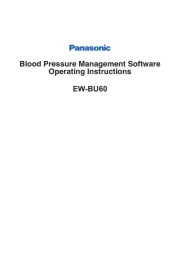
29 Juli 2025
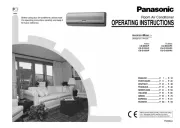
5 Juli 2025
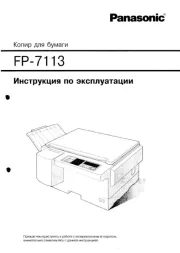
23 Mei 2025
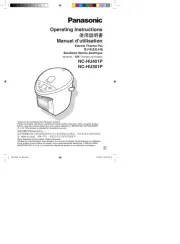
16 Mei 2025
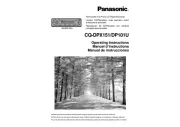
2 Mei 2025
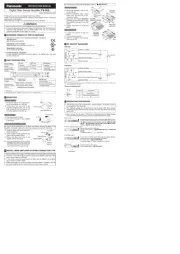
28 April 2025
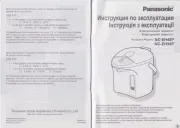
17 April 2025

17 April 2025

17 April 2025
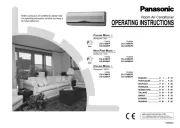
16 April 2025
Handleiding Niet gecategoriseerd
- Axor
- Fontiso
- Husqvarna
- Husky
- Boretti
- Nous
- Gorenje
- Baninni
- Bravilor
- Synology
- Eheim
- Bullet
- Soundcraft
- Levoit
- Telefunken
Nieuwste handleidingen voor Niet gecategoriseerd
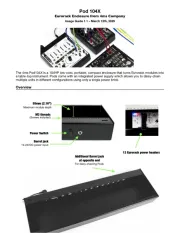
2 Augustus 2025

2 Augustus 2025
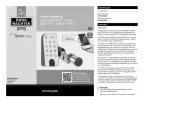
2 Augustus 2025

2 Augustus 2025
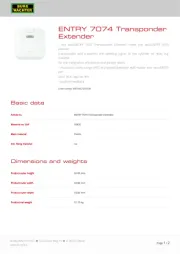
2 Augustus 2025
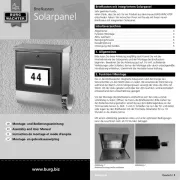
2 Augustus 2025
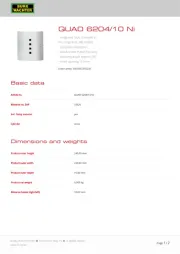
2 Augustus 2025
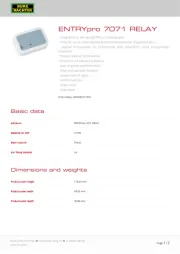
2 Augustus 2025
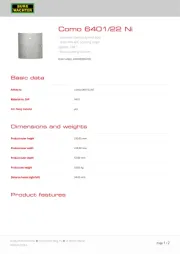
2 Augustus 2025
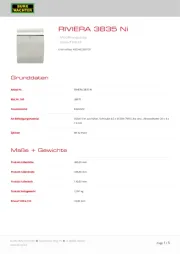
2 Augustus 2025